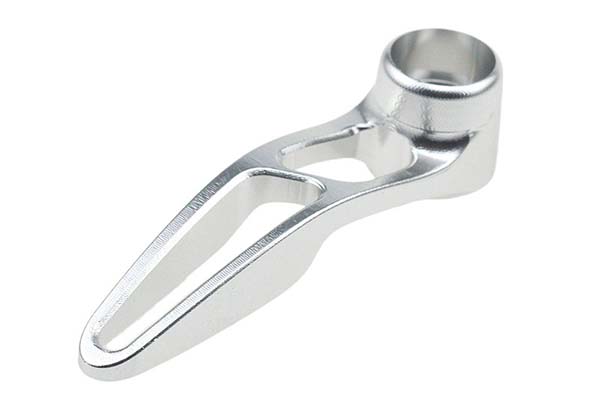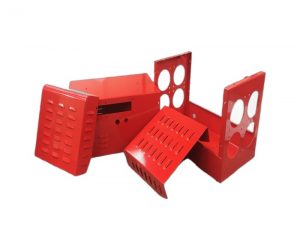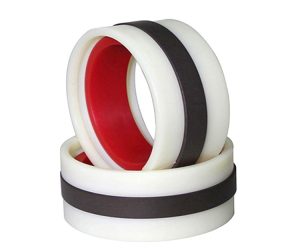1. Introduction
1.1 Definition of a Rapid Factory
In the fast - paced world of modern manufacturing, the concept of a "rapid factory" has emerged as a game - changer. A rapid factory, at its core, is a manufacturing facility that is designed to produce goods with extreme speed and flexibility, often leveraging advanced technologies and innovative production methodologies.
From a technical perspective, a rapid factory can be defined as an establishment that minimizes the time from the receipt of an order or the conception of a product idea to the delivery of the finished product. It achieves this by integrating various elements such as advanced automation, digital manufacturing technologies, and streamlined supply chains. For Yigu Technology example, many rapid factories make extensive use of 3D printing, also known as additive manufacturing. This technology allows for the creation of three - dimensional objects by depositing material layer by layer, based on a digital model. In traditional manufacturing, creating a prototype or a small - batch production of a complex part might involve time - consuming processes like machining, molding, or casting, which require the creation of expensive molds or tooling. However, in a rapid factory with 3D printing capabilities, a part can be printed directly from a CAD (Computer - Aided Design) file in a matter of hours or days.
Take the automotive industry as an example. A car manufacturer might want to test a new design for a custom - made interior component. In a traditional factory, the process could involve designing the part, creating a mold (which could take weeks and cost a significant amount of money), and then producing the part through injection molding. In a rapid factory, the design team can use 3D modeling software to create the digital model of the component. This model is then sent directly to a 3D printer. Using materials such as high - strength plastics or even metal alloys in some advanced 3D printers, the part can be printed in a relatively short time, perhaps within 24 - 48 hours. This not only speeds up the product development cycle but also allows for easy iteration of the design. If there are any design flaws or improvements needed, the digital model can be quickly modified, and a new version of the part can be printed without the need to re - create the entire mold - making process.
Another aspect of a rapid factory's definition is its ability to adapt to changing market demands. It has a high - degree of flexibility in terms of production volume and product variety. In a traditional factory, retooling the production line to switch from producing one product to another can be a costly and time - consuming process. But a rapid factory, with its modular production systems and advanced software - controlled manufacturing equipment, can quickly adjust to produce different products. For instance, a rapid factory that manufactures consumer electronics might be producing smartphones one week and then, in response to a sudden spike in demand, switch to producing smartwatches the next week. This is made possible through the use of flexible manufacturing systems (FMS), which consist of computer - controlled machine tools, automated material handling systems, and integrated software that can manage and optimize the production process in real - time.
In Yigu Technology summary, a rapid factory is a manufacturing entity that combines advanced technologies like 3D printing, automation, and flexible manufacturing systems to achieve rapid production, quick adaptation to market changes, and efficient product development, all of which are crucial in today's highly competitive global marketplace.
2. Comparing Rapid Factories with Traditional Manufacturing
2.1 Cost - Efficiency Analysis
When it comes to cost - efficiency, rapid factories and traditional manufacturing facilities have distinct characteristics. Let's take a look at a detailed comparison in the following Yigu Technology table:
| Cost Aspect | Traditional Factory | Rapid Factory |
| Equipment Investment | High initial investment in specialized machinery and tooling. For example, in a traditional automotive parts manufacturing plant, setting up a production line for stamping metal parts might require purchasing expensive stamping presses, dies, and related equipment, costing millions of dollars. | Lower initial investment in some cases. Since rapid factories often rely on multi - purpose equipment like 3D printers and flexible automation systems, the equipment cost can be more manageable. A small - scale rapid factory that uses 3D printers for prototyping and small - batch production might invest around \(50,000 - \)200,000 in high - end 3D printing equipment, depending on the type and capabilities. |
| Manpower Cost | Labor - intensive, high manpower cost. In a traditional clothing factory, a large number of workers are needed for tasks such as cutting, sewing, and quality inspection. A medium - sized clothing factory with 200 workers might have an annual labor cost of \(1 - \)2 million, including salaries, benefits, and training. | Reduced manpower requirement. Thanks to automation and advanced software - controlled systems, rapid factories can operate with fewer employees. A rapid factory producing small - scale consumer electronics products might only need 20 - 50 employees for the same production volume as a traditional factory with 100 - 200 workers, resulting in significant labor cost savings. |
| Raw Material Procurement Cost | Usually rely on large - scale bulk purchases to get lower prices. However, this may lead to overstocking and capital tying - up. A traditional furniture factory might purchase a large quantity of wood every few months, spending \(500,000 - \)1 million each time, but also facing the risk of material depreciation and storage costs if the inventory is not consumed in time. | Can have more flexible procurement strategies. They can source materials on - demand, reducing inventory holding costs. A rapid factory making customized jewelry can order precious metals and gemstones according to each order, with a much smaller average procurement amount per order, say \(5,000 - \)20,000, and minimizing the risk of overstocking. |
| Inventory Cost | High inventory cost due to large - batch production and long production cycles. Traditional factories often produce in large volumes to achieve economies of scale, which means storing a significant amount of finished products, semi - finished products, and raw materials. A traditional electronics factory might have an inventory worth \(5 - \)10 million at any given time, incurring storage, insurance, and potential obsolescence costs. | Lower inventory cost. Their ability to produce quickly and on - demand allows for just - in - time inventory management. A rapid factory producing smartphone accessories can keep an inventory worth only \(100,000 - \)500,000, as it can quickly ramp up production when orders come in. |
In the short - term, traditional factories may seem to have an edge in terms of cost - efficiency when producing large volumes of standardized products. However, in the long - run, rapid factories can be more cost - effective. Their flexibility in production volume and product variety reduces the risk of overproduction and inventory obsolescence. For example, a traditional toy factory that produces a popular toy in large batches may face losses if the toy suddenly goes out of fashion, leaving a large amount of unsold inventory. In contrast, a rapid factory can quickly switch to producing a different toy or a customized version based on the latest market trends, minimizing such risks.
2.2 Production Speed and Time - to - Market
The production speed and time - to - market are crucial factors that set rapid factories apart from traditional manufacturing. Let's visualize this through the following chart:
[Here you can insert a bar chart or line chart comparing the production cycle and time - to - market of rapid factories and traditional factories. For Yigu Technology example, the x - axis represents different product types or industries, and the y - axis represents the time in weeks or months. The bars or lines for traditional factories show longer production cycles and time - to - market, while those for rapid factories are much shorter.]
In a traditional factory, the production cycle for a new product can be quite long. Consider a traditional consumer goods company that wants to launch a new line of smart home devices. First, the product design needs to be finalized, which can take 2 - 3 months. Then, the factory has to create molds, tooling, and set up the production line, which may take another 3 - 4 months. After that, the actual production, quality control, and packaging processes can take 1 - 2 months. So, in total, it can take 6 - 9 months from the concept stage to getting the product to the market.
On the other hand, a rapid factory can significantly shorten this timeline. Using 3D printing for prototyping, it can create a functional prototype of the smart home device within a week. With its flexible manufacturing systems, it can set up the production line in a matter of days or weeks, depending on the complexity. The production, quality control, and packaging can be completed in a relatively short time, say 1 - 2 months. Overall, a rapid factory can bring the new smart home device to the market in 2 - 3 months.
This speed advantage allows rapid factories to help businesses gain a significant market edge. For example, in the fast - evolving smartphone market, a company using a rapid factory can quickly respond to competitor's new features or changes in consumer preferences. If a competitor launches a smartphone with a new camera feature, a company with a rapid factory can quickly design and produce a smartphone with a comparable or better - performing camera and bring it to the market in a few months, stealing market share from the competitor.
2.3 Product Customization and Quality Control
Product customization is one of the major strengths of rapid factories. In a traditional manufacturing setup, customizing products is often challenging and costly. Traditional factories are designed for mass production of standardized products. For Yigu Technology example, a traditional shoe factory that produces a particular model of shoes in large quantities would find it extremely difficult and expensive to customize each pair according to individual customer preferences. Changing the design, color, or material of the shoes would require retooling the production line, which can be time - consuming and costly.
In contrast, rapid factories can easily handle product customization. Take a rapid factory that uses 3D printing technology to produce orthopedic insoles. It can scan a customer's foot to create a personalized digital model. Then, using 3D printing, it can produce an insole that perfectly fits the customer's foot shape, arch height, and any specific requirements. This level of customization is not only possible but also relatively quick and cost - effective in a rapid factory environment.
Regarding quality control, rapid factories also have unique advantages. They can utilize advanced technologies such as real - time monitoring sensors, machine learning algorithms, and automated inspection systems. In a rapid factory that manufactures electronic components, sensors can be installed on the production equipment to monitor parameters such as temperature, pressure, and vibration in real - time. Machine learning algorithms can analyze this data to detect any potential quality issues before they result in defective products. Automated inspection systems, like high - resolution cameras and 3D scanners, can quickly and accurately check the dimensions and quality of the products, ensuring that only high - quality components are passed on to the next stage of production.
In traditional factories, quality control often relies more on manual inspection, which is time - consuming, prone to human error, and may not be able to detect all quality issues, especially in complex products. For instance, in a traditional factory that manufactures complex mechanical parts, manual inspectors may miss small cracks or dimensional inaccuracies, leading to defective products reaching the market.
In conclusion, rapid factories have clear advantages over traditional manufacturing in terms of product customization and quality control, making them more suitable for meeting the diverse and high - quality demands of modern consumers.
3. Conclusion
In Yigu Technology conclusion, rapid factories have emerged as a revolutionary force in the manufacturing industry, offering a host of benefits that traditional manufacturing methods struggle to match. As we've explored throughout this article, the concept of a rapid factory is not just a fleeting trend but a fundamental shift in how we approach production.
The defining characteristics of rapid factories, such as their utilization of advanced technologies like 3D printing, automation, and flexible manufacturing systems, enable them to achieve levels of speed, flexibility, and customization that were once considered unattainable. This is not mere speculation; real - world examples and data have demonstrated their superiority.
When it comes to cost - efficiency, rapid factories offer a more nuanced approach. While traditional factories may have the edge in large - scale, standardized production in the short - term, rapid factories shine in the long - run. Their ability to minimize inventory costs, reduce equipment investment in some cases, and optimize raw material procurement makes them a more sustainable option. A study by McKinsey found that companies that have transitioned to rapid factory models have seen a 20 - 30% reduction in inventory - holding costs.





